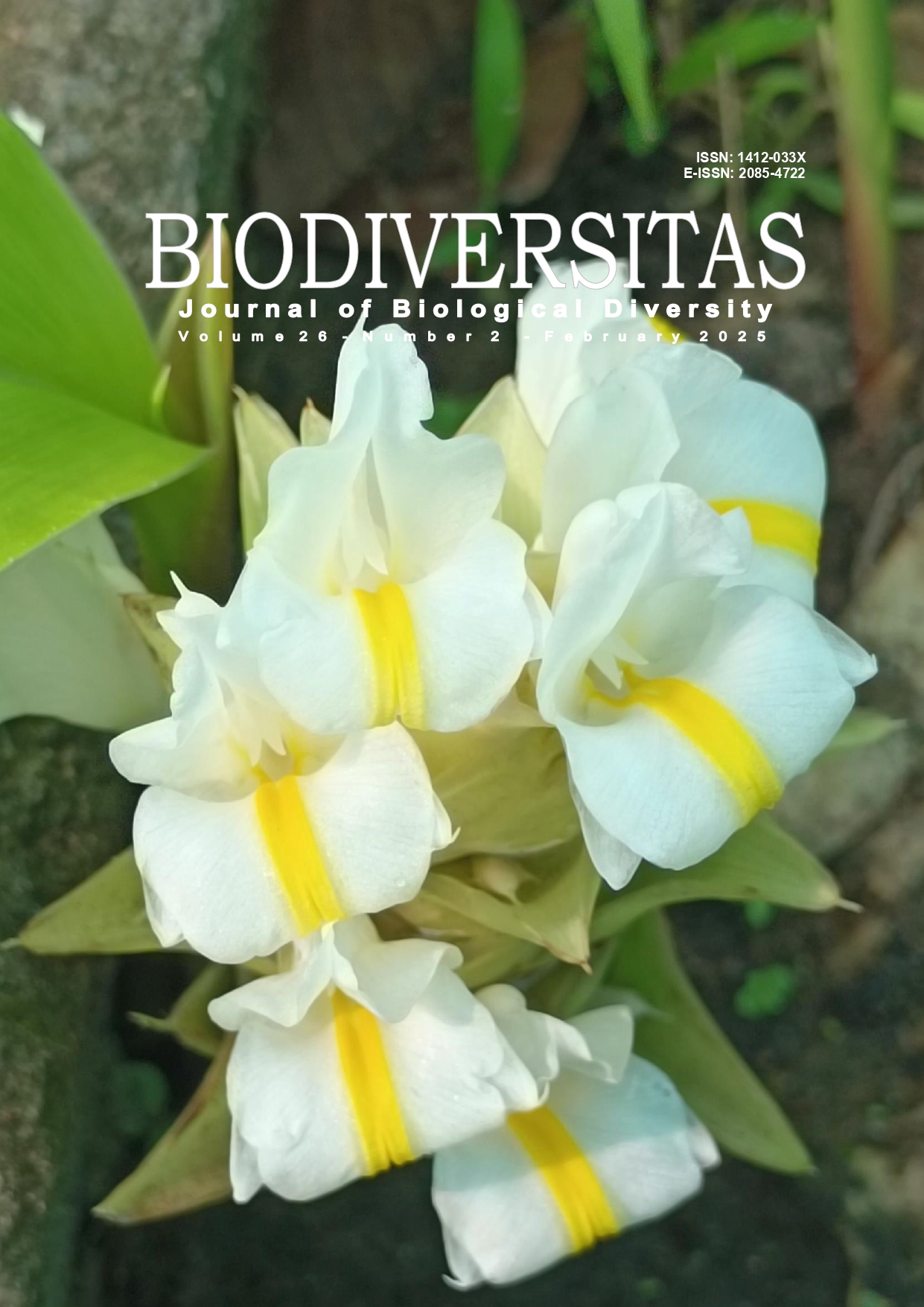Genetic diversity of Indonesian rice varieties for salinity tolerance using RAPD markers
##plugins.themes.bootstrap3.article.main##
Abstract
Abstract. Nurhidayati T, Rachmandika FCA, Jundana MQ, Rahayu AE, Herwibawa B, Saputro TB. 2025. Genetic diversity of Indonesian rice varieties for salinity tolerance using RAPD markers. Biodiversitas 26: 731-738. Rice (Oryza sativa) is essential for food security in Indonesia, but agricultural land conversion and rising salinity threaten production. Therefore, it is crucial to study germplasm collections for salt tolerance and utilize molecular markers to select resistant lines. This study investigated the potential marker for salinity tolerance using local Indonesian rice. We investigated the genetic diversity of five germplasm collections (i.e., IR64, Jeliteng, Mantap, Pamerah, and Situ Bagendit) using a molecular marker technique with Random Amplified Polymorphic DNA (RAPD). The genomic DNA was extracted using CTAB 2%. This research employed ten RAPD primers (OPA-02, OPA-10, OPA-13, OPB-07, OPC-02, OPD-08, OPI-01, OPK-20, OPU-19, OPU-20). The analysis revealed a significant level of polymorphism, producing 184 bands, of which 168 were polymorphic, indicating 100% polymorphism; notably, the OPI-01 primer exhibited 94% polymorphism. The amplified bands ranged from 250 to 1920 base pairs, with the OPC-02 primer showing the most promising results, evidenced by a PIC value of 0.431. These findings suggest that the identified RAPD markers can effectively enhance the selection of salt-resistant rice varieties. This study highlights the potential of molecular markers, such as OPC-02, that could be valuable tools for selecting salt-tolerant rice varieties and contributing to food security amidst the challenges of agricultural land conversion and soil salinity.

